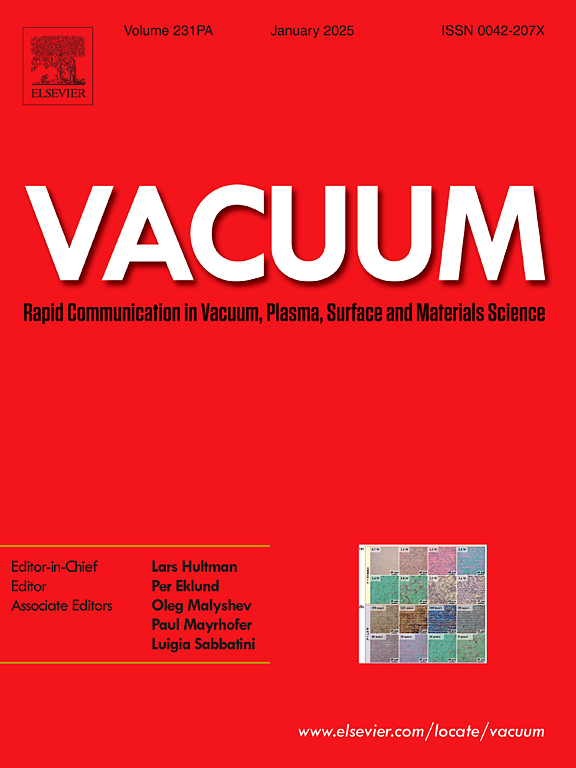Synthesis and hydrolysis mechanism of calcium sulfide for H2S production from gypsum waste
IF 3.8
2区 材料科学
Q2 MATERIALS SCIENCE, MULTIDISCIPLINARY
引用次数: 0
Abstract
The copper smelting industry generates significant gypsum waste, primarily composed of calcium sulfate (CaSO4), which can be utilized as a sulfur source for hydrogen sulfide (H2S) production. This study explores an optimized process for H2S generation via hydrolysis of calcium sulfide (CaS), produced by vacuum carbothermal reduction of gypsum. The results show that: 1) CaSO4 is reduced to CaS under vacuum carbothermal conditions, and subsequent hydrolysis efficiently produces H2S; 2) key parameters, including reduction temperature, carbon content, and recovery time, significantly influence CaS yield; 3) under optimized conditions (hydrolysis temperature, reaction time, and solid-liquid ratio), H2S concentrations exceeded 8000 ppm, and high-purity H2S gas was achieved, meeting industrial requirements for further processing. Thermodynamic analysis and characterization of reaction intermediates provided insights into the underlying mechanisms, highlighting the critical role of temperature and phase composition in optimizing H2S production. Kinetic analysis further clarified that the hydrolysis process follows a diffusion-controlled mechanism, with the temperature dependence of the reaction rate constant (k) aligning with the Arrhenius equation. This optimized approach offers a sustainable pathway for utilizing gypsum from copper smelting, contributing to sulfur resource recovery, waste reduction, and high-purity H2S production for industrial applications.

石膏废渣产硫化钙的合成及水解机理研究
铜冶炼工业产生大量石膏废物,主要由硫酸钙(CaSO4)组成,可作为硫化氢(H2S)生产的硫源。本研究探索了石膏真空碳热还原制备硫化钙(CaS)水解生成H2S的优化工艺。结果表明:1)CaSO4在真空碳热条件下被还原为CaS,随后水解高效生成H2S;2)还原温度、碳含量、还原时间等关键参数对CaS收率有显著影响;3)在优化条件(水解温度、反应时间、料液比)下,H2S浓度超过8000ppm,可制得高纯H2S气体,满足工业深加工要求。对反应中间体的热力学分析和表征提供了对潜在机制的深入了解,强调了温度和相组成在优化H2S生产中的关键作用。动力学分析进一步阐明了水解过程遵循扩散控制机制,反应速率常数(k)与温度的依赖关系符合Arrhenius方程。这种优化的方法为铜冶炼中石膏的利用提供了一条可持续的途径,有助于硫资源的回收、废物的减少和工业应用的高纯度H2S生产。
本文章由计算机程序翻译,如有差异,请以英文原文为准。
求助全文
约1分钟内获得全文
求助全文
来源期刊

Vacuum
工程技术-材料科学:综合
CiteScore
6.80
自引率
17.50%
发文量
0
审稿时长
34 days
期刊介绍:
Vacuum is an international rapid publications journal with a focus on short communication. All papers are peer-reviewed, with the review process for short communication geared towards very fast turnaround times. The journal also published full research papers, thematic issues and selected papers from leading conferences.
A report in Vacuum should represent a major advance in an area that involves a controlled environment at pressures of one atmosphere or below.
The scope of the journal includes:
1. Vacuum; original developments in vacuum pumping and instrumentation, vacuum measurement, vacuum gas dynamics, gas-surface interactions, surface treatment for UHV applications and low outgassing, vacuum melting, sintering, and vacuum metrology. Technology and solutions for large-scale facilities (e.g., particle accelerators and fusion devices). New instrumentation ( e.g., detectors and electron microscopes).
2. Plasma science; advances in PVD, CVD, plasma-assisted CVD, ion sources, deposition processes and analysis.
3. Surface science; surface engineering, surface chemistry, surface analysis, crystal growth, ion-surface interactions and etching, nanometer-scale processing, surface modification.
4. Materials science; novel functional or structural materials. Metals, ceramics, and polymers. Experiments, simulations, and modelling for understanding structure-property relationships. Thin films and coatings. Nanostructures and ion implantation.
 求助内容:
求助内容: 应助结果提醒方式:
应助结果提醒方式:


